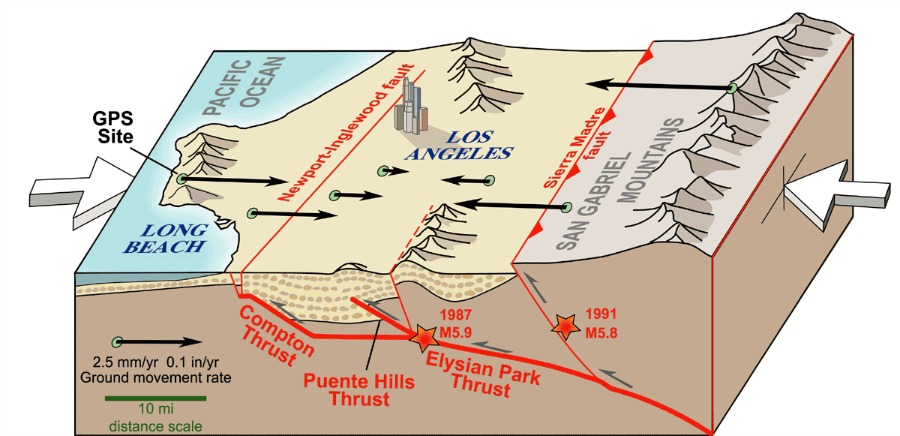
Recently, a study published in Earth and Space Science claimed that there was a significant chance (a 99.9% chance, to be exact) that Los Angeles would experience a major quake within the next three years. Although the paper has been published, the 99.9% certainty should raise a few eyebrows.
And indeed, it has.
To be clear, the scientists behind the paper claim that the number shouldn’t be taken in the traditional sense. Rather, we should view it as a figure that is meant to test a model. In this case, it’s more like an algorithm is being tested, and less like a prediction is being made. If the numbers are wrong, then it means that we need to alter the model to make better predictions.
In short: The 99.9% figure was not meant to be the focal point. But of course, in the media, it was.
Uncovering the Research
In their paper, the scientists looked at the earthquake that occurred in La Habra last year (2014), and attempted to predict the chances of another, similar event within a 60 mile radius (96 km). Ultimately, they determined that there was a 99.9% probability for a magnitude 5 or larger between April 2015 and April 2018. Notably, the likliness of a 6.0 falls to just 35% and continues to decline as the numbers rise.
Either way, it is important to note that, although a magnitude 5.0 quake is not exactly an enjoyable event, it’s also nothing like the recent Rock film, San Andreas. You won’t see toppling skyscrapers, enormous tsunamis, or utter annihilation. In fact, according to Michigan Tech. University, a magnitude 5.5 to 6.0 quake is characterized by “Slight damage to buildings and other structures.”
Wow.
To further illustrate this point, when the La Habra quake hit last year, it was enough to damage a few homes and buildings, and it also caused a number of individuals to fall over, but that was mostly all. And that event was just about the same as what is referenced in the paper (it was a 5.1 quake).
True, the total cost of damage was substantial, some $12 million in damage. But keep in mind that a shifted foundation is very expensive to fix, but generally not deadly.
And as previously mentioned, the authors note that the paper is really a set of assumptions that are being put forth to test a model. The study’s lead author, Jet Propulsion Laboratory principal research scientist Andrea Donnellan, told the LA Times, “As scientists, we were not putting out an official forecast. We were putting out something in a paper to test.”
To that end, what the paper was really trying to get at was, during the 2014 quake, the deeper layers of our planet failed to undergo the same motions as those that were above. Consequently, they argue that it indicates that the deeper layers still have seismic strain, and an earthquake will eventually (probably in the next 3 years) have to release that strain.
The Response
A number of individuals responded with the expected “Omigod, we’re all going to die.”
But no, we aren’t. The United States Geological Survey responded to the sensationalism that (unsurprisingly) surrounded this paper with a rather harsh statement that criticized those who were fear-mongering, and they called for skepticism: “While the earthquake forecast presented in this paper has been published in the online journal Earth and Space Sciences, it has not yet been examined by the long-established committees that evaluate earthquake forecasts and predictions made by scientists.”
They also had rather strong words in relation to the 99.9% statistic, utterly refuting the claims for the present: “The earthquake rate implied by the 99.9% probability is significantly higher than observed at any time previously in Southern California, and the lack of details on the method of analysis makes a critical assessment of this approach very difficult.”
In short, the USGS does not think that the methodology outlined in the paper is particularly clear. As such, it makes it difficult, if not impossible, to judge the accuracy of the claims. In the end, they assert that no one should think any differently than they did the day before. Stating, “the USGS does not consider the analysis presented in this paper a reason to change our assessment of the hazard.”
Now, that’s not to say that earthquakes aren’t an issue. They can be very deadly. And I do not mean to devalue those who have lost their lives to these amazingly powerful events by suggesting that such events are ‘no big deal’ or that they won’t happen again. They can be both catastrophic and tragic, and of course they will happen again.
But we do these individuals no honor by fear-mongering. It is far better to keep a level head (a skeptical head) and take sound precautions based on sound science.